What’s on at the Tate? – Original Painting
About the Image:
The old power station looms on the South bank, in this Tate Modern painting . Crossing the Thames on the Millennium Bridge, I often wonder “What exhibitions are on?” or “Will there be something good to see outside?”.
I’m a fan of industrial architecture. The no nonsense approach to buildings that produce pure functionality. I’m not averse to making things look pretty, even when they can’t be seen, but there’s an honesty to industrial architecture. It’s not afraid to admit the need for pipes and wiring, or that needs change and parts need replacing.
From the moment the development of the Tate modern was announcedin the old Bankside power station I was intrigued. And to find the Millennium Bridge leads to it, I was ecstatic. Industrial and contemporary architecture combined they were made to be.
There’s a phrase that’s popular at the moment “Repurposing”. What used to be called recycling although I think it’s meant to imply a more creative approach. It’s not really a new concept, especially when it comes to architecture. Many buildings have been remodelled to make them fit for new purposes.
The art movement of “found” or readymade objects has been used since ‘Fountain’, by Marcel Duchamp. It’s a fitting notion, then that the building that houses the Tate Modern should itself be a repurposed building. Ironically or intentionally perhaps?
As many of the Tate Modern’s exhibits are themselves readymades or include found objects.
The visitors in the Tate Modern painting are arriving on foot. Possibly as a tourists via St Paul’s Tube station. It’s a popular route to approach via the Millennium Bridge. A stunning approach with the dark building contrasting with the shiny surfaces of the bridge.
And what does anyone think when heading for a museum?
Why, what’s on, of course!
Creation The picture is painted on watercolour paper. Cathy draws the lines with masking fluid to a planned arrangement before painting it with a watercolour wash which gets covered with clingfilm. Once this is removed the picture is further developed using acrylic inks which are left to dry before the masking is removed to reveal the final picture.

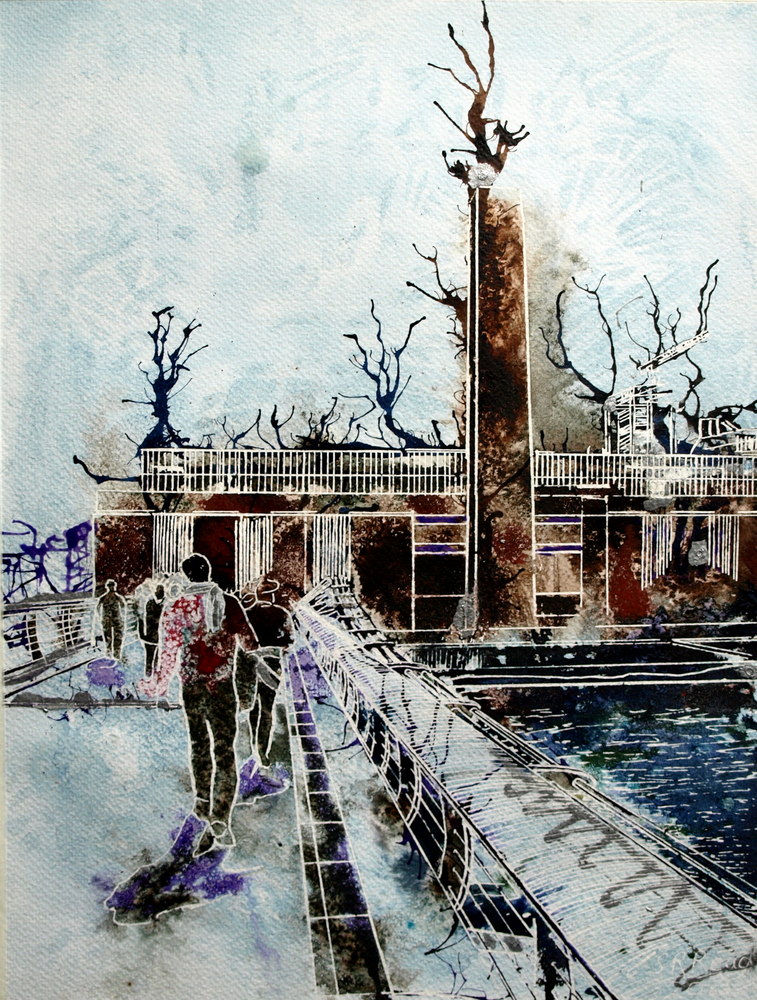
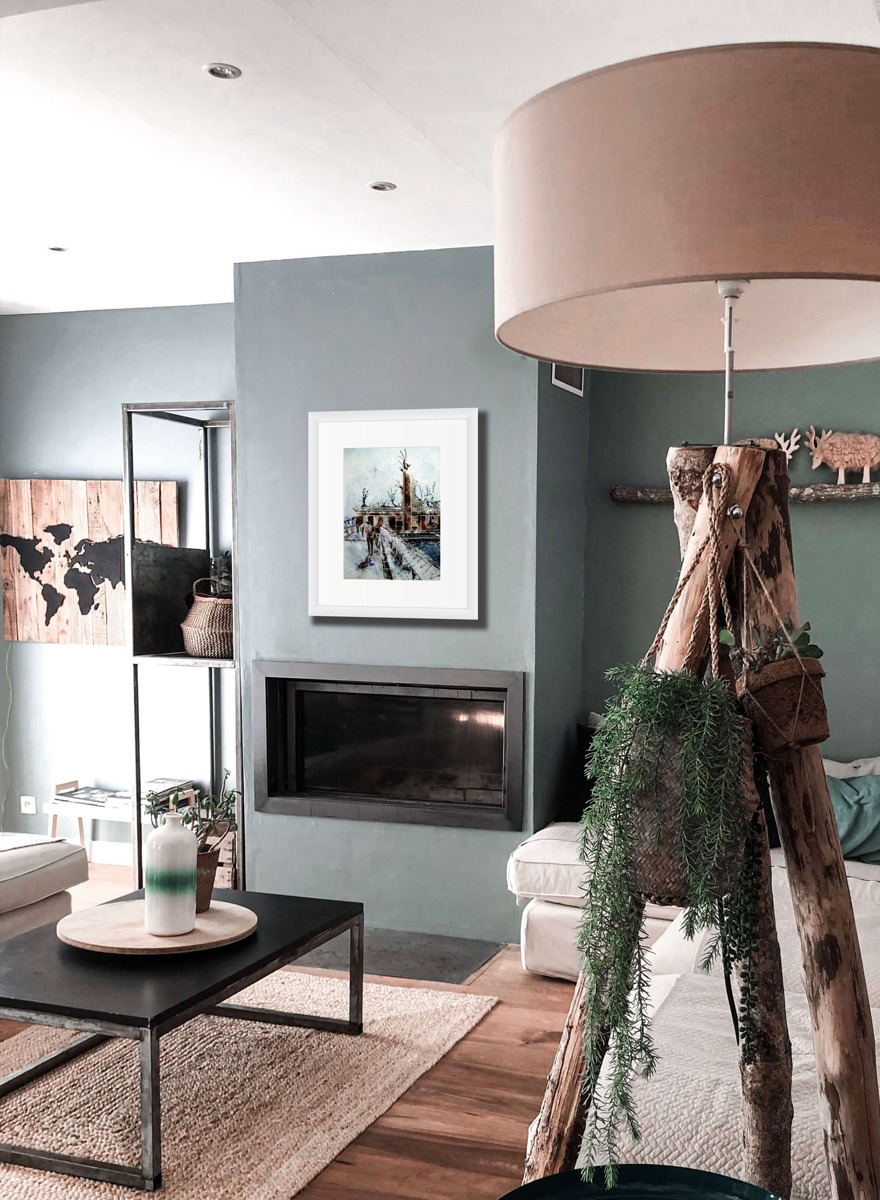
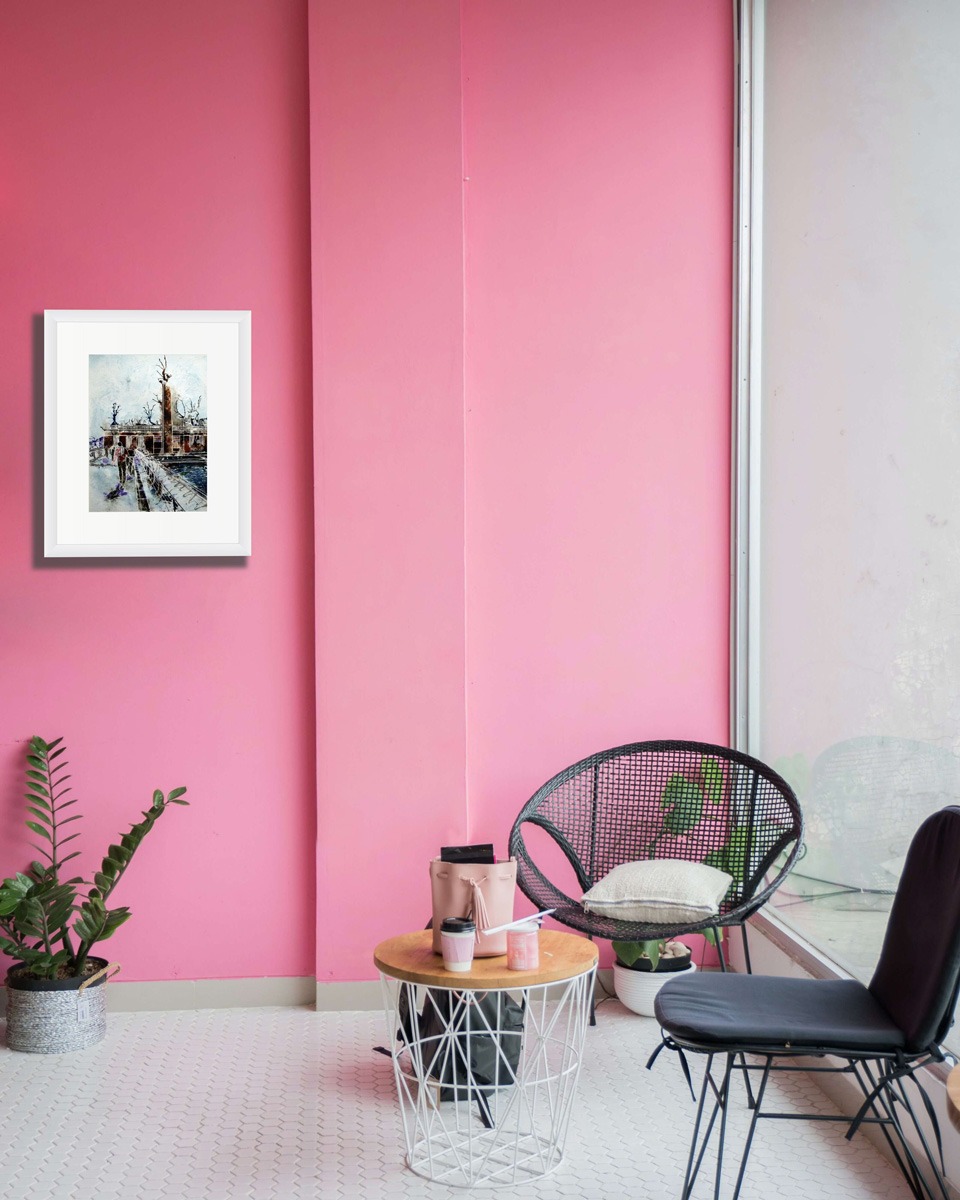
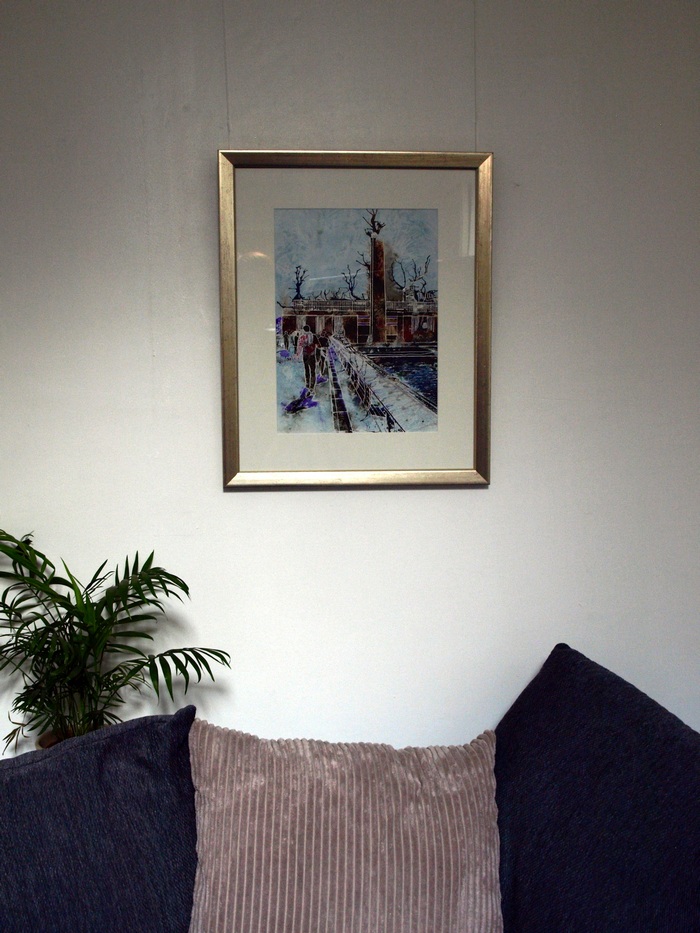
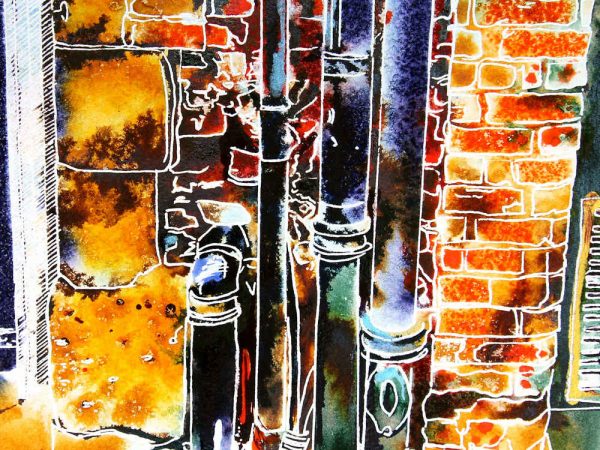
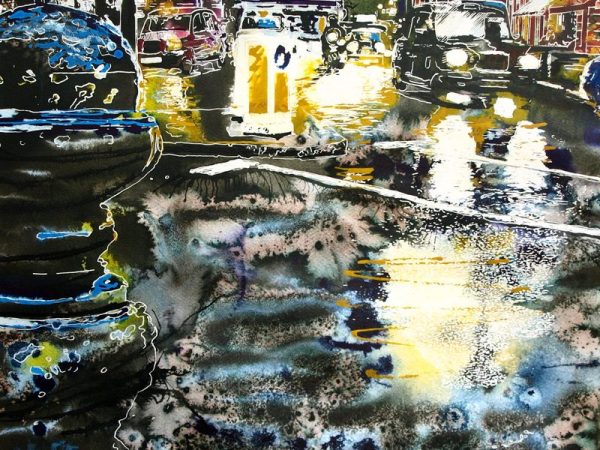
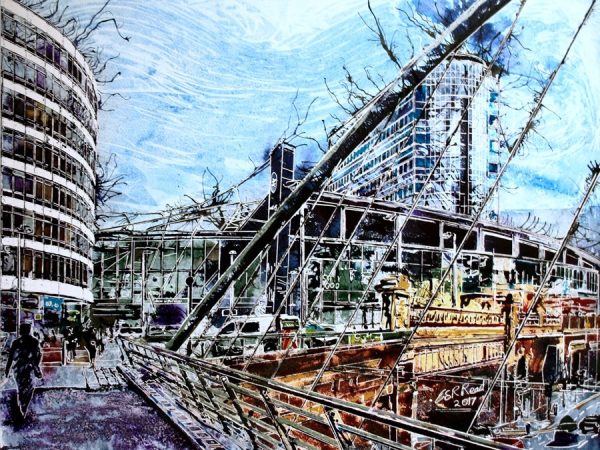
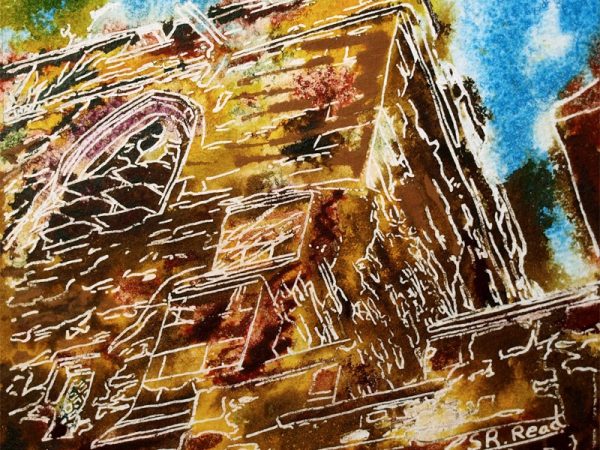
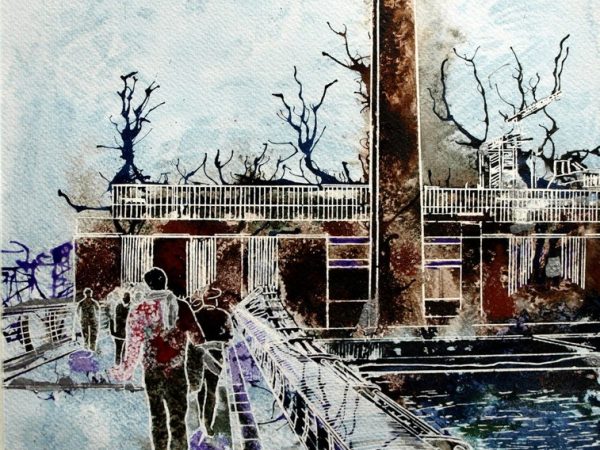
Reviews
There are no reviews yet.